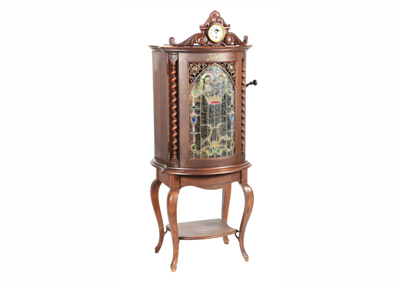
NEW YORK — Music boxes, the iPods of centuries past, come in a variety of shapes and styles, from large, upright coin-op examples that were designed for boardwalks, arcades and other public venues, to smaller, more delicate models ideal for boudoirs and other private spaces.
Music boxes rose to prominence after some unknown genius fashioned a steel comb and synchronized it with a rotating cylinder. The technique was simple and compelling; when the moving cylinder encountered the deliberately and carefully placed prongs of the comb, it created music. Some fancier music boxes were fitted with a tiny drum or small bells to enhance the effect.
Music boxes seem quaint and outdated now, but they were the main mechanical option for hearing music at home in the 18th century. Though digital streaming services have long since rendered them obsolete, a well-made and well-preserved antique music box can provide a strong design accent in the home, one that references the technology of the past as well as the advances in manufacturing and engineering that made them possible and then made them more alluring.
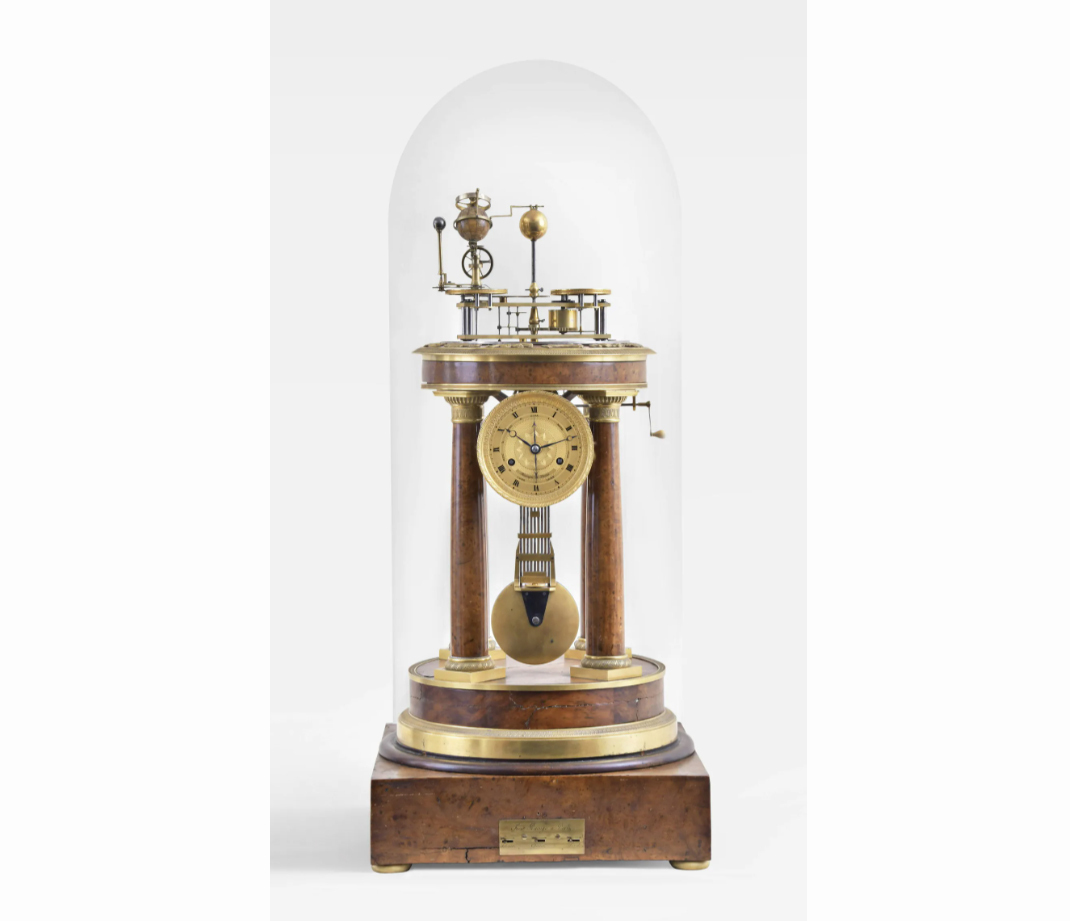
Music boxes are often paired with clocks to create mantelpieces. A fine example of the form is a Parisian amboyna and gilt bronze orrery clock fitted with a music box signed by Raingo Freres. Housed in a rotunda-form case, the beautiful object sold for $150,000 plus the buyer’s premium in June 2022 at Schmitt Horan & Co. It featured indulgent details such as gilt leaf and dart-molded rings at the top and bottom, and its columns had ornamented gilt bronze bases and capitals.
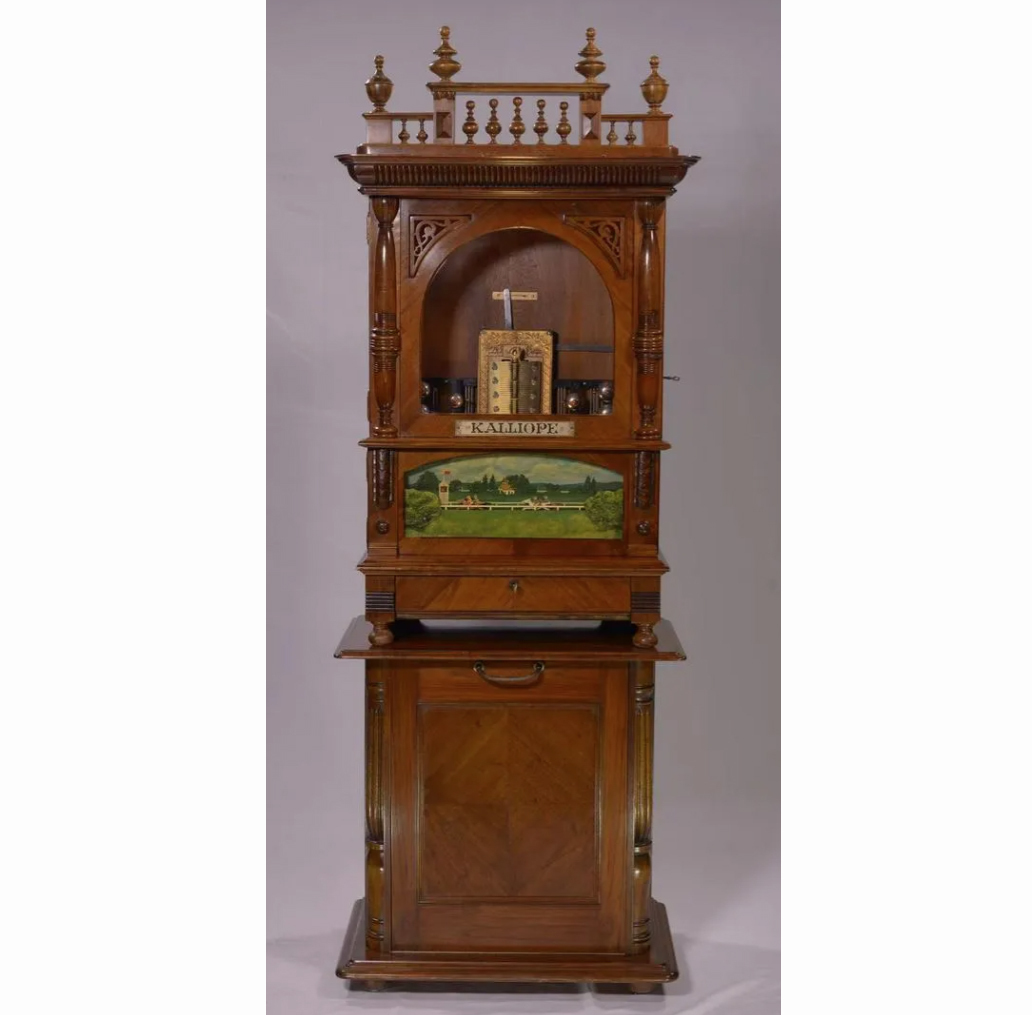
Kalliope Musikwerke was the leading German manufacturer of upright music boxes at the turn of the previous century. Bells were often part of its designs. A circa-1895 Kalliope 12-bell disc music box featuring a horse racing automaton sold for $90,000 plus the buyer’s premium in April 2022 at Hotspot Auctions. The metal discs that supplied the music could be easily changed out so owners could bring the freshest tunes home upon release. Discs were capable of playing hundreds of different songs, a feat that metal cylinders, the other prominent music media of the time, could not match.
Uniting coin-op slot machines with music boxes proved a near-instant hit. Antique music machines of this type are ardently sought-after by coin-op and slot collectors as well as music box aficionados. A hard-to-find 5¢ Caille Brothers black cat musical cabinet upright that still played well sold for $82,000 plus the buyer’s premium in November 2019 at Dan Morphy Auctions.
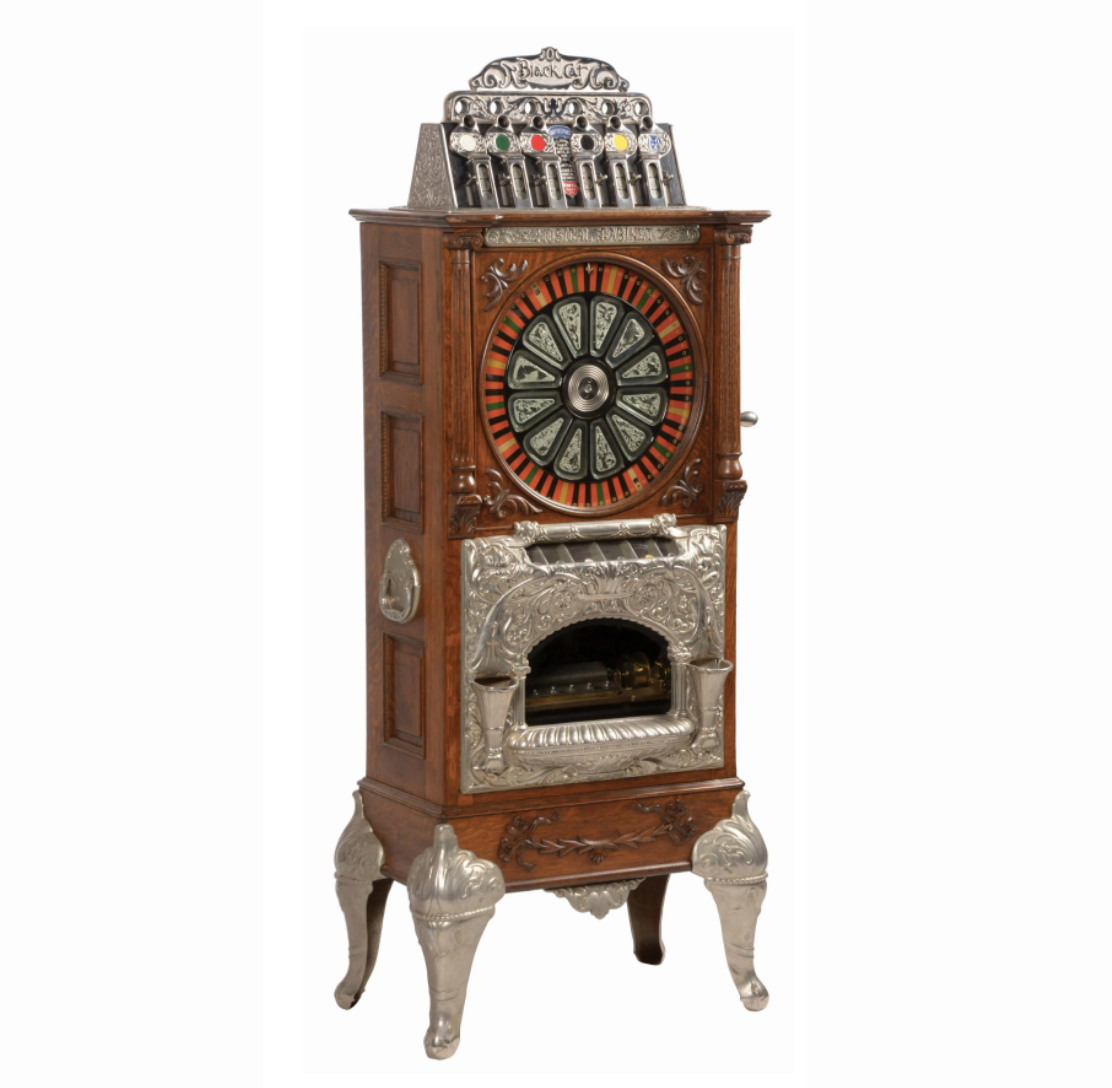
The Swiss are famous for their watches and clocks so it’s probably not surprising they made top-flight music boxes, too. Switzerland is, in fact, believed to be the birthplace of the music box. It is also the country where Charles Paillard debuted the interchangeable cylinder music box and where he opened the first music box factory in 1875 in St. Croix. Before the Palliard factory opened, music box production depended on individual specialty tradesmen making separate components that were later assembled into a whole.

Tabletop music boxes came to market first, but massive ones, such as the Biedermeier Trois-Corps bureau desk, had their fans and still do. A functioning circa-1870 example sold for €55,000 (about $57,749) plus the buyer’s premium in January 2022 at Dutch Auction Company. Resembling an elegant piece of case furniture, its bureau conceals a fine Mermod Freres music box equipped with 10 interchangeable cylinders. The music box also contains a zither attachment and a tune indicator.
The top American maker of music boxes was Regina. The company had its roots in Germany, though, as its founder had worked for Symphonion before deciding to set up shop in New Jersey in 1892. At first, Regina imported discs from Europe, but it soon began producing its own, some decorated with pictures and others with just the company trademark.
A 15.5in Regina Corona style 35 music box with a walnut case, an art glass front and an eight-day Seth Thomas clock sold for $27,500 plus the buyer’s premium in June 2020 at Dan Morphy Auctions. The machine’s music mechanism featured automatic tune-changing and it could hold 12 discs, playing each twice with just one winding of the crank.
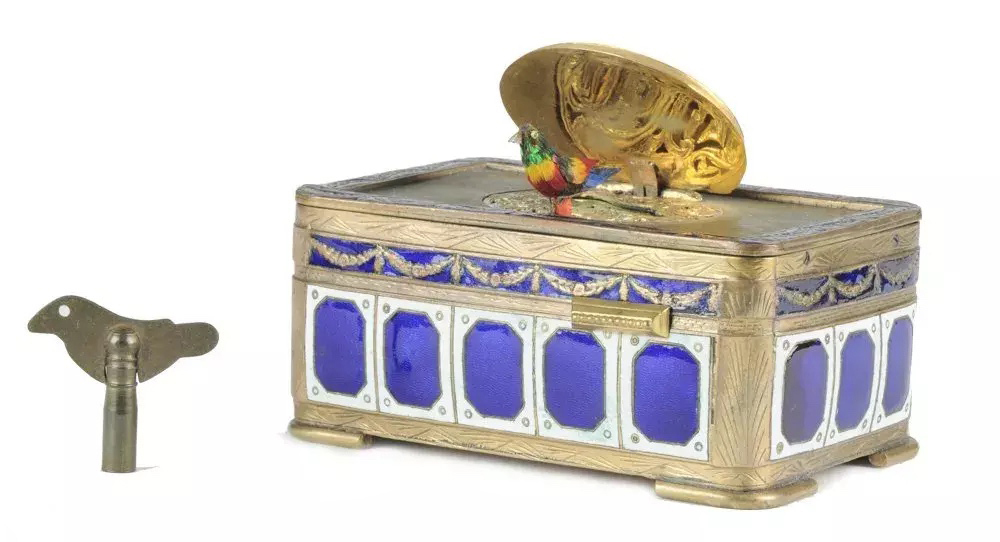
While collectors strongly prefer music boxes that remain capable of playing a tune, sometimes, non-working examples can perform well at auction. A cloisonne music box dating to the 18th or 19th century earned $3,500 plus the buyer’s premium at Oakridge Auction Gallery in May 2016. The lot notes stated it could no longer play music, but presumably, the beauty and quality of its decorations, which included blue and white enameling and a lid painted with a pastoral landscape under which hid a little toy bird with real feathers, compensated for the lack.
Music boxes lost their primacy in 1878, after Thomas Edison received a patent for the phonograph. But as with many tools that become obsolete, music boxes that were designed to please the eye as well as the ear were saved and cherished. They survive as charming representatives of the march of progress, delighting music collectors and fans of early technology alike.


